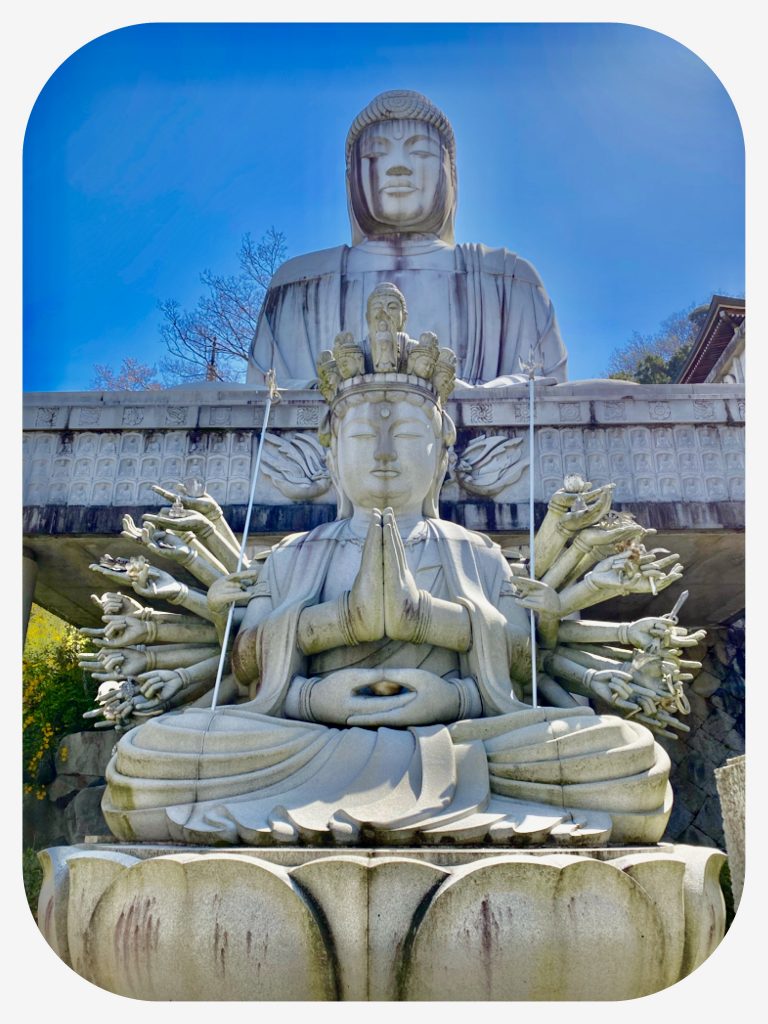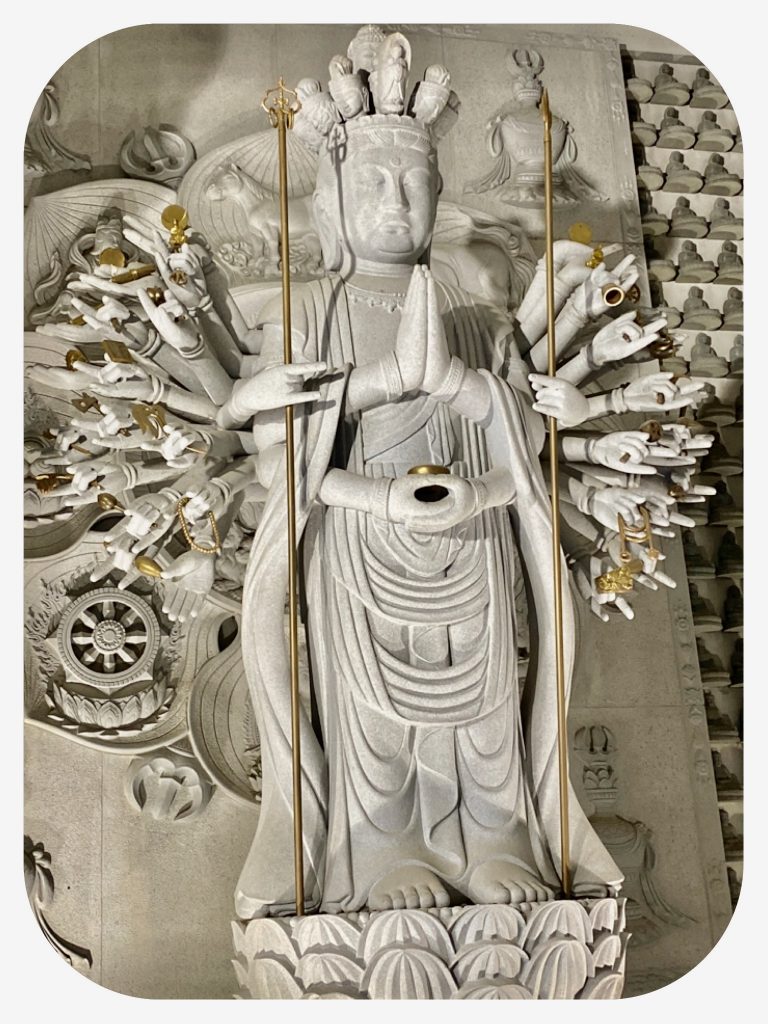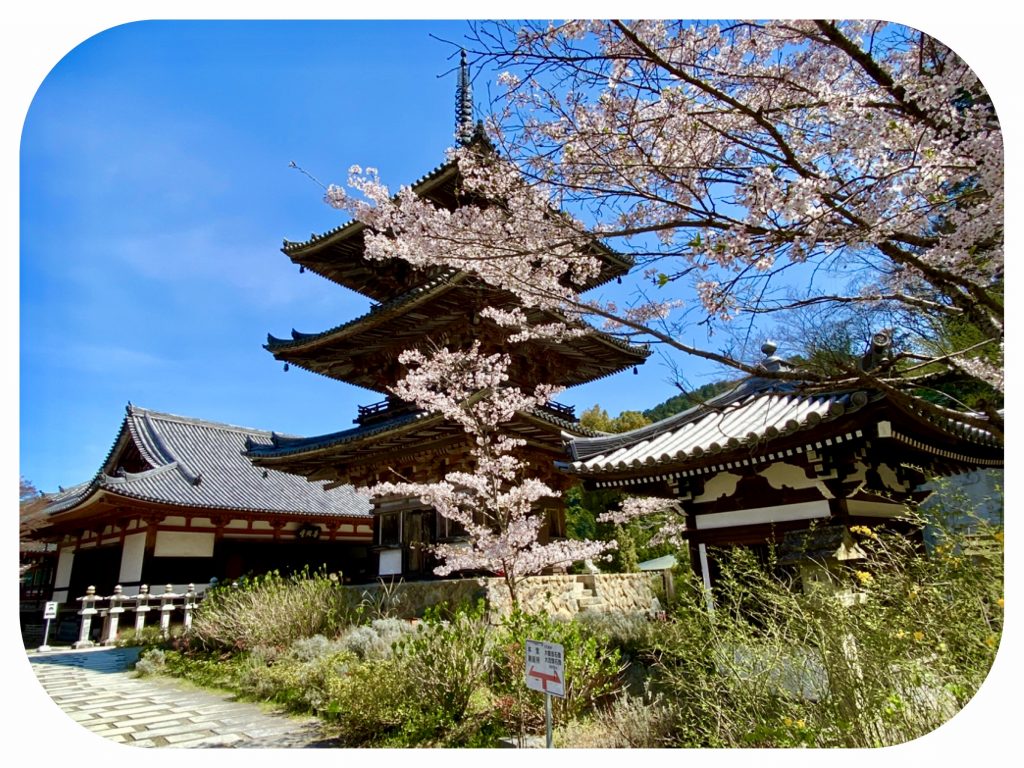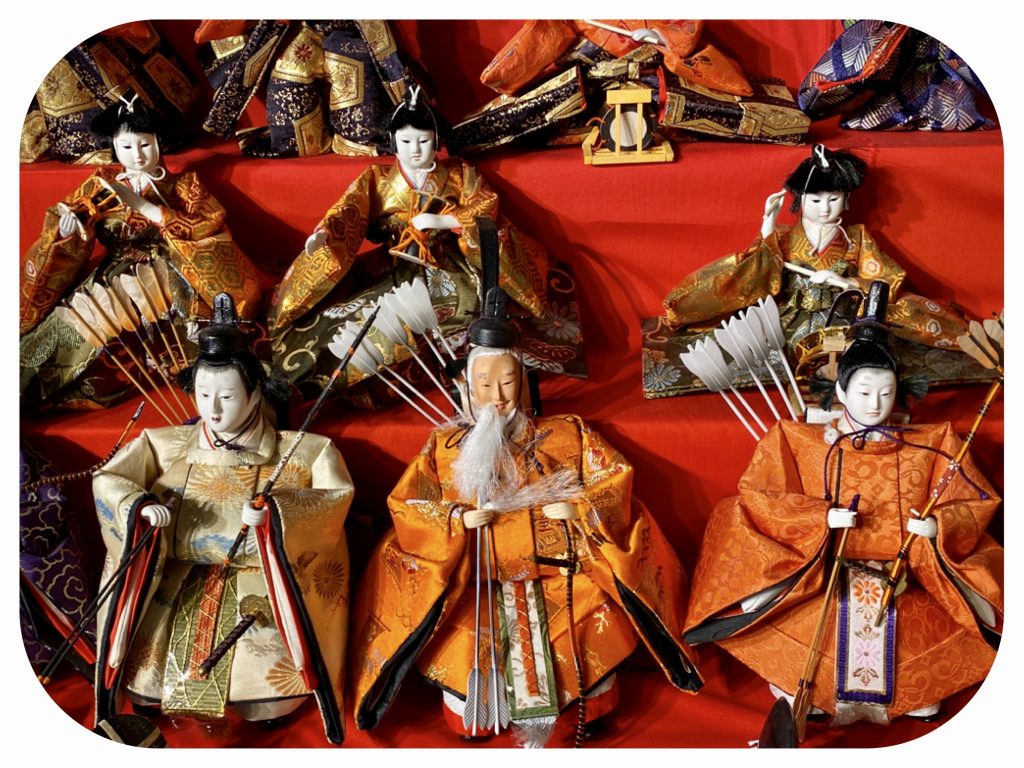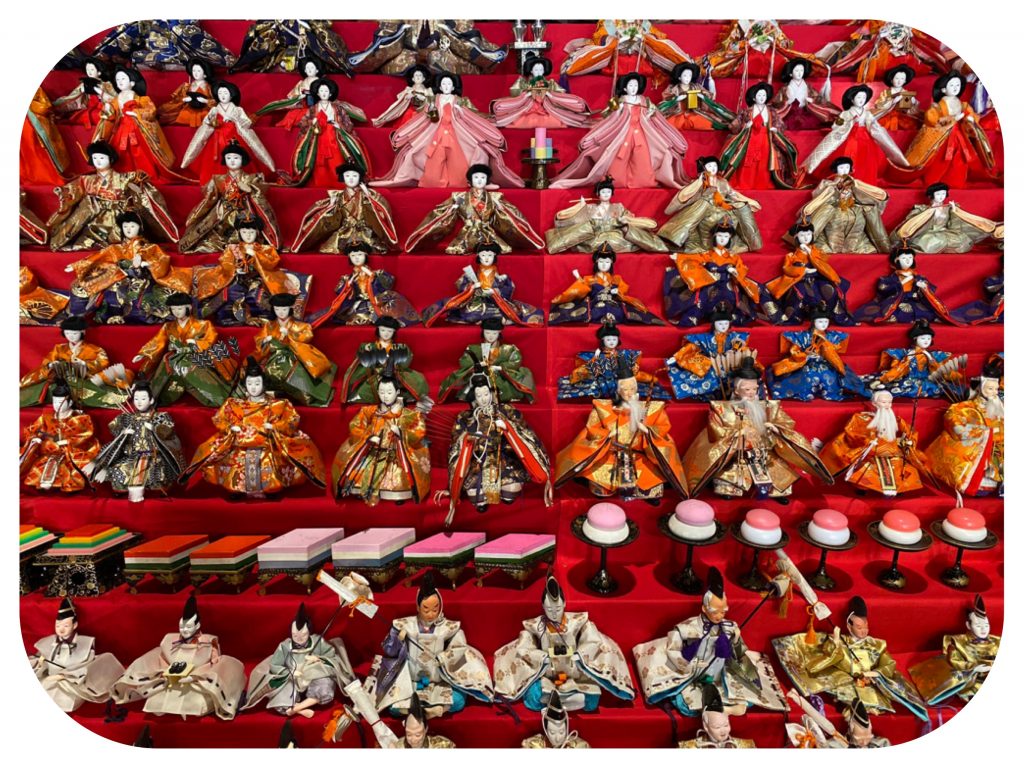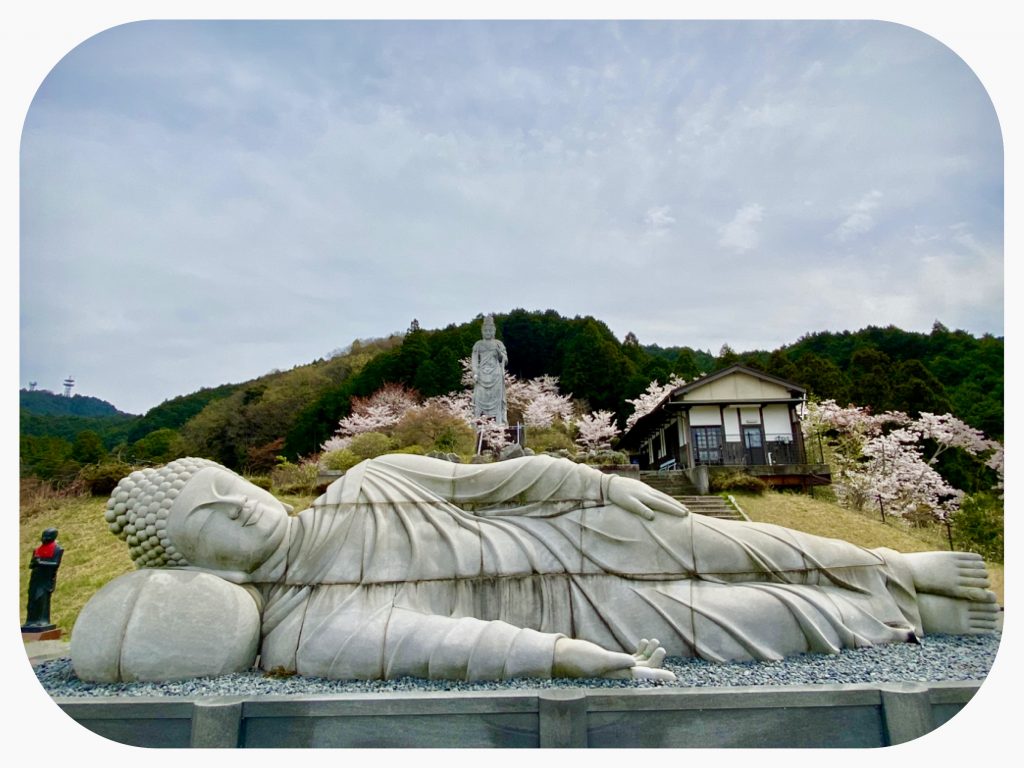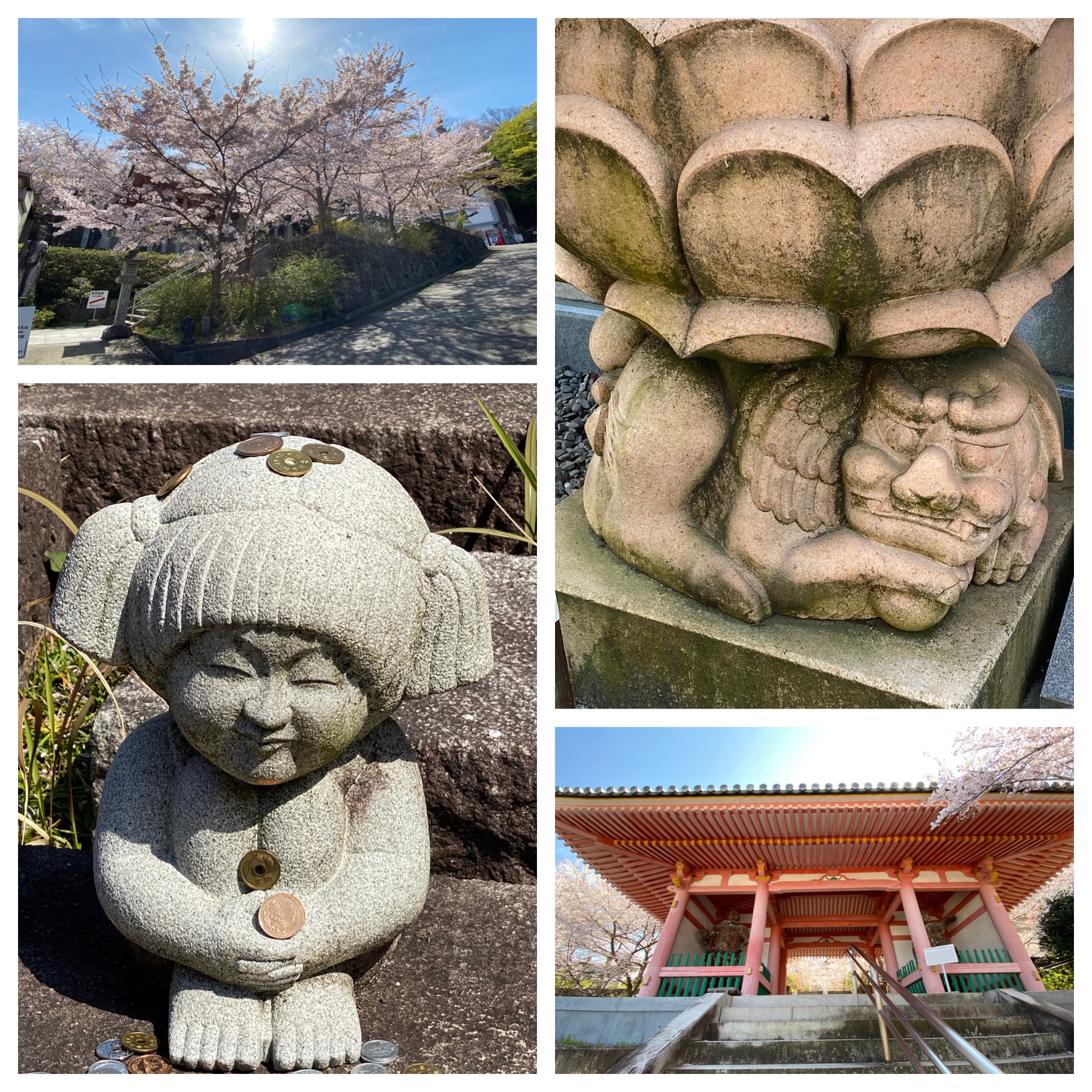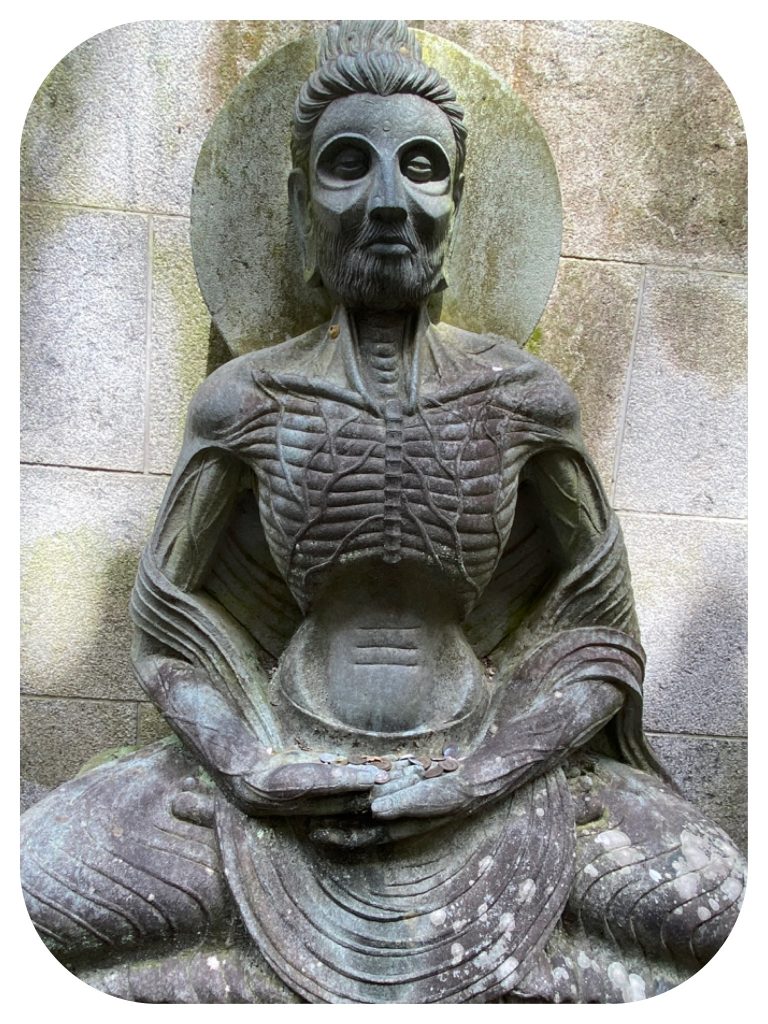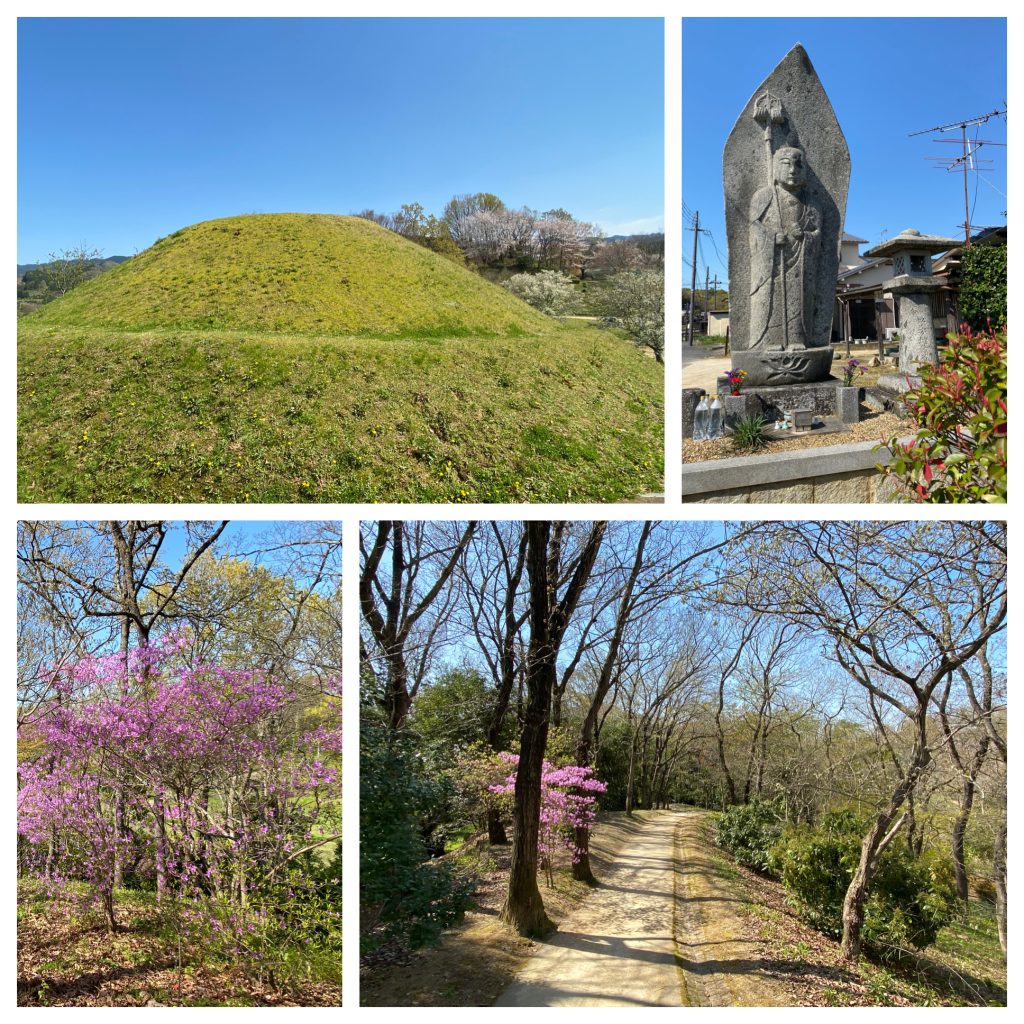Day 21 - The Road To Enlightenment - Walking The Saigoku Kannon Pilgrimage - Temple #6 (Tsubosaka-dera) and Temple #7 (Oka-dera), and Tumulus Burial Mounds and Kofun Settlements In Nara Prefecture, Japan
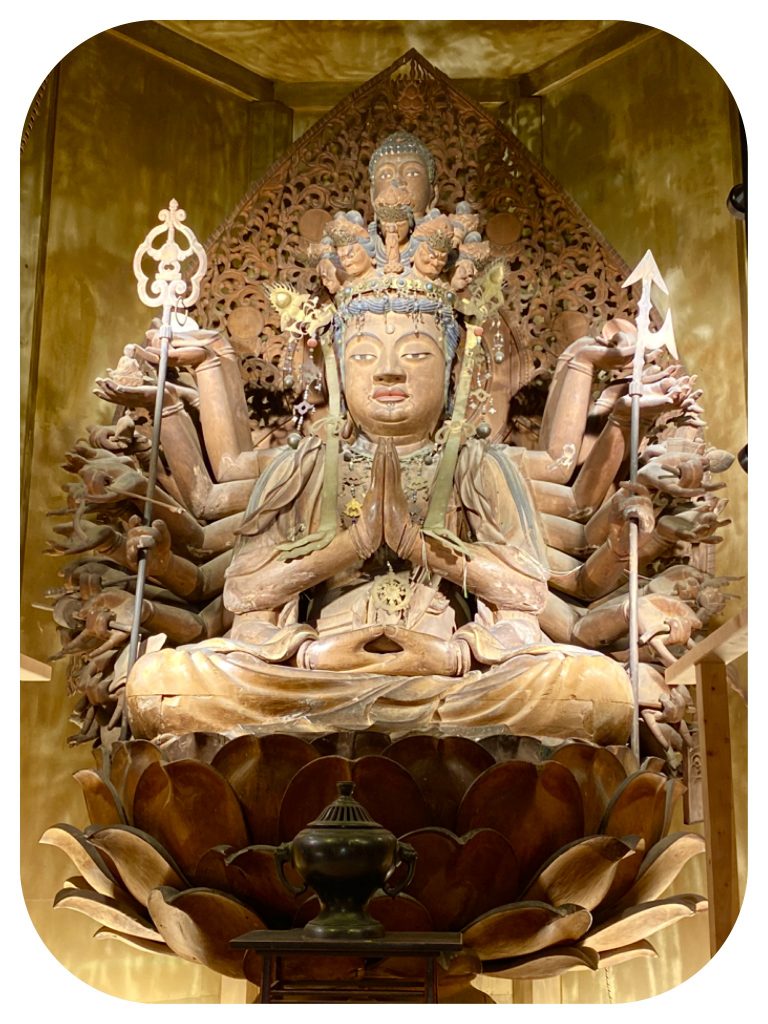
Day 21 - The Road To Enlightenment - Walking The Saigoku Kannon Pilgrimage - Temple #6 (Tsubosaka-dera) and Temple #7 (Oka-dera), and Tumulus Burial Mounds and Kofun Settlements In Nara Prefecture, Japan
Temple #6, Tsubosaka-dera Temple in southern Nara Prefecture, is perhaps the most beautiful temple I have seen in Japan.
It is set on top of Tsubosaka mountain, with beautiful old buildings, two pagodas, many sculptures, and tall stone Buddha statues towering over a forested hill full of flowering Sakura trees.
The huge statues were created by thousands of Indian stonemasons, and sent to Japan in pieces.
The pieces were then assembled on location at this mountain.
Some of the stone used to create the Buddha statues dates back millions of years.
Today, the temple grounds were at the peak of the Sakura cherry blossom season, and the flowering trees were in full bloom.
The wind carried with it pink Sakura petals, and gently placed them at our feet.
The wind also scattered flower petals on the stone steps and in people’s hair.
It was very charming indeed.
I felt like a kid in wonderland.
Everywhere I looked I saw picturesque scenery.
The main hall has a masterpiece, a statue of Nyori Healing Kannon with a thousand arms and eleven heads.
It is said that healing miracles related to eye problems have happened here for centuries.
For over 1300 years, people have come here to pray for healing for their eye ailments.
The Main hall was decorated with an exhibition of many hundreds of Hina dolls.
The Hina dolls are not dolls people play with, but very elaborate, decorative dolls depicting members of ancient Japanese society.
The dolls depict the Emperor, Empress, court attendants, musicians, merchants and their wives, lords and ladies, wizards and wise teachers, girls and boys, men drinking sake in an izakaya, etc., all dressed in the traditional court dress of the Heian period
These Hina dolls are hand made treasures, and people keep them for generations.
The precious dolls are not on display all year round; they are shown only once or twice per year.
Tsubosaka-dera was built In 717 AD, in a mixture of Japanese and Indian styles.
The big stone Buddhas, the Taj Mahal-style square sanctuary and a long wall of bas-relief stone carvings were presented by Indira Gandhi in thanks for the temple’s work to help leprosy sufferers.
It is also known as a temple of healing.
According to legend, a local Shaman found a Senju Kannon (a thousand-armed Buddha) buried here.
The Shaman was given the gift of healing powers.
He cured the Empress of an eye disease, and she built the temple in gratitude.
The Senju Kannon, which we saw in the Octagonal Inner Hall, is still believed to cure eye ailments.
We prayed in front of this beautiful statue and chanted the Heart Sutra.
From this beautiful mountain, we walked downhill towards Temple #7, Oka-dera Temple.
We got instructions on how to walk from the monk at the entrance to the temple.
He explained that we could walk through the forest, and then the path would join the road at the village.
It was a beautiful forest, marred only by the fact that people dumped old televisions, an occasional old Dell computer and even an old washing machine, from the road above.
The forest path ended in the village, and from there we walked to see the many Tumulus burial mounds and the second century BCE Kofun settlements.
The Tumuli are forested round hills, where emperors were buried.
None of them have ever been excavated, except for one which has an inner chamber that has painted murals.
There is a museum where you can see copies of the murals and learn about the Tumuli, but it was closed because of the coronavirus.
Still, there were beautiful long walking paths and the Kofun settlements, that are recreations of the style of huts and farming life the Kofun used to have, were all in an open air park.
In the park, we took a tea break, and later another tea break in the late afternoon, in an unmanned farmers market stall that sold bags of oranges for a dollar.
They had benches and tables in the shade which was great, because we did not pass by anyplace that we could have had lunch today.
Okadera, Temple #7, was established in 663 AD by the Priest Gien (義淵).
It is also known as the “Wish granting Buddha temple” and the "Dragon Lid temple.”
The official name is Ryūgai Temple, but it is commonly known as “Oka”, literally meaning "Dragon Lid".
The primary Buddha enshrined at Oka-dera is the Nyorin Kannon Bosatsu or the Buddha of Wish-Fulfilling, and is the largest clay Buddhist Statue in Japan.
It was made in the 8th century and it is still in amazing shape.
The statue was once brightly painted, but after 1200 years, the colors have worn away; however you can still see some faint colors that remain.
It was also said that a monk named Kūkai, (Kōbō Daishi) made the statue by mixing clay he had brought from China, India and Japan.
The legend of the “Dragon Lid” Pond, which gave the temple its name, says that once an evil dragon lived here, who was harming people in this area.
A priest with great Dharma powers subdued and confined the dragon to a pond at the front of the temple.
He placed a large stone in the pond as a lid, to keep the dragon from running away.
The “Dragon Lid” pond of Oka temple still has the same stone lid and legend says that even today, when the stone shakes, it starts to rain.
The pond today does not look like much, definitely not like a pond that could hold down a dragon.
But the stone is still surrounded by a sacred rope tied to four bamboo posts, and the legend lives on.
The rest of our walk was beautiful.
We passed by many historical sites, among them some dedicated to famous Japanese women who influenced history.
It was a beautiful day, the weather was perfect, the temples were awe inspiring and it felt so good to be alive....
With a heartfelt blessings and tons of love,
Tali and Jules
Daily stats:
Steps walked - 32,348
24 km. walked
Active walking time - 6 hours
Total walking time today - 7 hours.
Total walking distance on the Saigoku to date - 421 km
Temple Visited:
Temple #6 Tsubosakadera
Temple #7 Okadera
